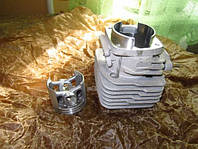Regulirovka Karbyuratora Benzopili Motor Sich 270

Cls.az is tracked by us since January, 2014. Over the time it has been ranked as high as 83 899 in the world, while most of its traffic comes from Azerbaijan, where it reached as high as 518 position. Guba.cls.az receives about 1.58% of its total traffic.
Jackson 5: I’m So Happy [00:02:46] 17. Jackson 5 anthology rar. Jackson 5: It’s Great To Be Here [00:03:10] 15. Jackson 5: Maybe Tomorrow [00:04:45] 14. Jackson 5: Sugar Daddy [00:02:32] 16.
-pomogite-identificirovat-motor-dzhonson/ 2013-12-04T10:06:02+04:00 daily 0.5. -obshit-stenu-270-70sm-po-kakoy-sheme/ 2012-05-11T23:26:50+04:00 daily. -mini-traktor-s-moto-bloka-mtz-05-motor-sich/ 2018-06-22T13:37:15+03:00.
It was hosted by corporate static pool0. Guba.cls has the lowest Google pagerank and bad results in terms of Yandex topical citation index. We found that Guba.cls.az is poorly ‘socialized’ in respect to any social network. According to Google safe browsing analytics, Guba.cls.az is quite a safe domain with no visitor reviews.
Members of the Muon g-2 collaboration at Fermilab are developing this lead fluoride crystal, 14 centimeters long, and the large-area SiPMs for the experiment’s detector. They will help scientists measure more precisely the energies of particles from decaying muons, as well as the decay time of the particles. The experiment at Fermilab is under construction in the new MC-1 building. It aims to measure with unprecedented precision — 140 parts per billion — a property of the muon called the anomalous magnetic dipole moment. The effort will improve upon the famous experiment at Brookhaven National Laboratory, which finished data taking in 2001. The new Fermilab experiment aims to improve the precision with 20 times more data and by reducing key systematic uncertainties.
These factors significantly affect the design of the detector, which measures the muon decay data used to deduce the magnetic dipole moment. Now, after six years and four beam tests, members of the original team from Brookhaven along with several new collaborators have finished testing a production prototype of a new calorimeter — the detector that measures particle energies and decay time — for the Fermilab experiment. The new calorimeter design improves on its Brookhaven counterpart by reducing something called detector pile-up, which occurs when two particles strike a detector in rapid succession, and with custom electronics that can withstand higher signal rates. To address these issues, the collaboration will segment the electromagnetic calorimeter into 54 independent elements, and the signal in each of these will have an ultrashort duration in time. The Fermilab accelerator complex will deliver a beam of polarized muons into a storage ring, which guides the muons around a circular path.

Fermilab will deliver the muons at a much higher rate than the Brookhaven experiment. The detectors, positioned along the inside of the ring, are designed to operate near, but not disturb, the highly uniform and strong magnetic field of the storage ring. A combination of lead fluoride crystals, which convert deposited energy into Cherenkov photons (light), and devices called silicon photomultipliers (SiPMs), which collect photons, serves these purposes well.